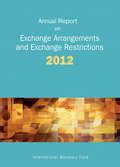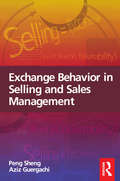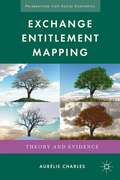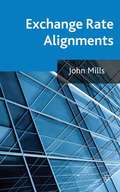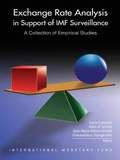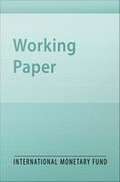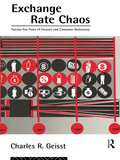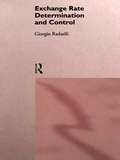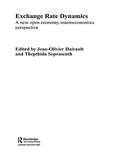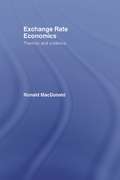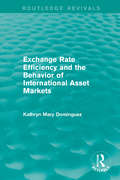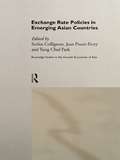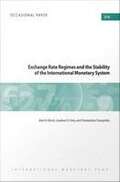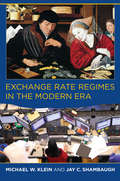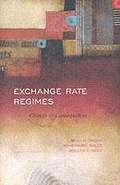- Table View
- List View
Excessively Obsessed: Find your passion, build your business, learn your limits, love your life
by Natasha OakleyModern and practical business lessons from Natasha Oakley, co-founder of Monday Swimwear and The Pilates Class Do you have an idea for a business, but no clue where to start? Is there a product or service you're sure you could sell, if only you knew how to file the paperwork or fund the company or build the marketing plan? Do you have an inkling that you'll want to start a business one day - and you can't stop wondering if you have what it takes? Then you have come to the right place.In this empowering guide, Natasha gives an honest account of the blood, sweat and tears that goes into creating a successful business, from registering your company and opening a bank account, all the way to building your team and scaling for growth. Removing the glamour of #hustleculture and the illusion of how easy it might look on social media, Natasha will detail how she bartered jobs and co-founded Monday Swimwear in her living room with her best friend and grew that business (and others) to a multi-million dollar empire. And she will explain how, no matter what your idea, if you are Excessively Obsessed with it, you can do the same. In her book, she will show readers how to: - Harness your idea to create a viable business that has longevity- Know when to leave your job, how to fund your start-up and whether you need a business partner - Generate and grow a huge following - Build contacts when no one knows who you are- Rise above pressures of social media to use it powerfully and with purpose- Create work/life balance to avoid burnout and take care of yourself Excessively Obsessed is for anyone who has ever wondered: should I start my own business? (Spoiler alert: There's no right answer!) And whether you decide to get started tomorrow or give it more time, you'll close this book with a reignited sense of passion and purpose in your career. Through her own story, Natasha will inspire readers to tap into their own unique potential, because when you find your calling, it's worth becoming obsessed.
Exchange Arrangements and Exchange Restrictions
by International Monetary FundA report from the International Monetary Fund.
Exchange Arrangements and Foreign Exchange Markets
by Nci Ötker-Robe Karl Habermeier Jorge Iván Canales-Kriljenko Rupa Duttagupta Shogo Ishii John LeimoneWith the rapid integration of international financial markets, it is important that monetary systems operate effectively in order to promote stable exchange rate arrangements. This report forms part of the IMF's multilateral surveillance among its member countries. It updates developments in exchange arrangements and currency convertibility during the years 1998 to 2001, as well as considering the factors affecting foreign exchange market organisation and volatility in developing and transition countries in 2001.
Exchange Behavior in Selling and Sales Management
by Peng Sheng Aziz GuergachiExchange Behavior in Selling and Sales Management presents a pragmatic and easy-to-implement framework for the successful operation of selling and sales management. Focused specifically on the value-exchange behavior of buyers and sellers, the book is composed of eight fundamental building blocks, which provide:* A revolutionary framework to describe the dynamics of consumer and organizational buying processes* A scientific, analytical approach to the personal elements in selling * A much needed insight into the personal interactions between buyers and sellers, both the implicit and explicit * A new and unique structure which integrates psychographic data mining and modeling techniques in a sales context, for the first time Exchange Behavior in Selling and Sales Management reflects selling and sales management practices within the field, based upon the extensive experience of the authors and other contributors. It is essential reading for advanced students, practitioners and researchers in sales and marketing.
Exchange Entitlement Mapping: Theory and Evidence
by Aurélie CharlesThe main aim of this book is to develop and implement an innovative tool: exchange-entitlement mapping, or E-mapping for short. This tool enables us to look at the economic and social opportunities to develop human capabilities for different groups of individuals, depending on their group identity such as age, ethnicity or gender.
Exchange Rate Alignments
by John MillsThis book calls for a radical reappraisal of economic policy in the UK. It argues that a much lower exchange rate is needed to re-establish sufficient manufacturing capacity to enable Britain to pay its way in the world. Mills makes the case for the removal of balance of payments constraints to achieve growth and avoid endless austerity.
Exchange Rate Analysis in Support of IMF Surveillance
by International Monetary FundThe purpose of this volume is to give a sense of the broad range of exchange rate issues dealt with by the International Monetary Fund in support of its policy advice, program design, and surveillance mandates by presenting 11 empirical studies. The editors (all of the International Monetary Fund) have organized the studies into three parts focused on the determination and impact of the real exchange rate, assessing competitiveness and the equilibrium real exchange rate in specific countries or country groups, and considerations in the choice of exchange rate regime. Annotation ©2009 Book News, Inc. , Portland, OR (booknews. com)
Exchange Rate Arrangements and Currency Convertibility Developments and Issues
by R. Barry Johnston Alexander Kyei Mark SwinburneThis study reviews the developments and issues in the exchange arrangements and currency convertibility of IMF members. the principal information source for this report is the Annual Report on Exchange Arrangements and Exchange Restrictions prepared in consultation with national authorities.
Exchange Rate Assessment
by Peter Isard Hamid FaruqeeA report from the International Monetary Fund.
Exchange Rate Assessment in a Resource-Dependent Economy: The Case of Botswana
by Matthew Gaertner Corinne DeléchatA report from the International Monetary Fund.
Exchange Rate Assessments: Methodologies for Oil Exporting Countries
by Rudolfs Bems Irineu de Carvalho FilhoA report from the International Monetary Fund.
Exchange Rate Chaos: 25 Years of Finance and Consumer Democracy
by Charles R. GeisstThe Bretton Woods system ensured a quarter of a century of relative stability on the world's financial markets. The quarter of a century which has followed has brought financial chaos and excessive financial volatility. Exchange Rate Chaos: 25 Years of Financial and Consumer Democracy describes and compares US and British financial history during this period. It highlights: * similarites in financial developments between the two countries * consumer democracy: Have the wishes of consumers dominated exchange rate policy? * The decline of the small investor and the hegemony of financial institutions * How the floating exchange rates are manipulated to government advantage One of the few financial histories to deal with the postwar period, this book shows how financial developments have shaped contemporary society and politics.
Exchange Rate Determination and Control
by Giorgio RadaelliFirst published in 1995. Routledge is an imprint of Taylor & Francis, an informa company.
Exchange Rate Dynamics: A New Open Economy Macroeconomics Perspectives (Routledge International Studies In Money And Banking Ser. #Vol. 27)
by Jean-Olivier Hairault Thepthida SopraseuthThis important new book builds upon the seminal work by Obsfeld and Rogoff, Foundations of International Macroeconomics and aims at providing a coherent and modern framework for thinking about exchange rate dynamics. With a wide range of contributions, this book is likely to be welcomed by the macroeconomics and financial community.
Exchange Rate Economics: Theories and Evidence (Imf Working Papers #Working Paper No. 91/62)
by Ronald MacDonaldFirst published in 2007. Exchange Rate Economics: Theories and Evidence is the second edition of Floating Exchange Rates: Theories and Evidence, and builds on the successful content and structure of the previous edition, but has been comprehensively updated and expanded to include additional literature on the determination of both fixed and floating exchange rates. Core topics covered include: • the purchasing power parity hypothesis and the PPP puzzle; • the monetary and portfolio-balance approaches to exchange rates; • the new open economy macroeconomics approach to exchange rates; and • the determination of exchange rates in target zone models and speculative attack models. Exchange Rate Economics: Theories and Evidence also includes extensive discussion of recent econometric work on exchange rates with a particular focus on equilibrium exchange rates and measuring exchange rate misalignment, as well as discussion on the non-fundamentals-based approaches to exchange rate behaviour, such as the market microstructure approach. The book will appeal to academics and postgraduate students with an interest in all aspects of international finance and will also be of interest to practitioners concerned with issues relating to equilibrium exchange rates and the forecastability of currencies in terms of macroeconomic fundamentals.
Exchange Rate Efficiency and the Behavior of International Asset Markets (Routledge Revivals)
by Kathryn DominguezThis book, first published in 1992, examines the subject of foreign exchange market efficiency and, in particular, the effectiveness of central bank intervention in the market. This book is ideal for students of economics.
Exchange Rate Movements and Their Impact on Trade and Investment in the APEC Region
by Takatoshi Ito Peter Isard Tamim Bayoumi Steven SymanskyThe 18 members of the Asia-Pacific Economic Cooperation Council (APEC) encompass not only a wide geographic area but also broad differences in stages of economic development, including among them some of the fastest- growing economies in the world. Such rapid growth has been ficilitated by high levels of investment and trade, international linkages, and, in most APEC economies, macroeconomic policies that have sustained growth while not sparking excessive inflation. This study offers insights about how medium and long-term changes in real exchange rates have affected international (and intra-APEC) trade and investment in the region.
Exchange Rate Policies in Emerging Asian Countries (Routledge Studies in the Growth Economies of Asia #Vol. 13)
by Jean Pisani-Ferry Stefan Collignon Yung Chul ParkThe future emergence of a European monetary zone is set to transform the configuration of the international monetary system and the roles of the dollar, the Euro and the yen within this system. This book addresses this issue with discussion of:* exchange rate policies pursued in the principal Asian countries* the measurement of equilibrium exchange rates for these countries* the maintenance of the dollar peg by Asian currencies* the absence of a trend to monetary regionalism based on the yen* the outlook of regional monetary co-operation* the outlook of regional monetary co-operationCase studies pay particular attention to Korea, Taiwan, Singapore and Thailand.
Exchange Rate Policy at the Monetary Authority of Singapore
by Mihir A. Desai Mark F. VeblenThe Monetary Authority of Singapore (MAS) is responsible for the country's monetary policy, and its decisions are intended to support the country's overall strategy for sustainable economic growth with price stability. MAS has been very successful in managing exchange rates using a managed float system, which allows more flexibility than a fixed exchange rate but less volatility than freely floating exchange rates. Following the Asian financial crisis, Dr. Khor Hoe Ee and his colleagues must decide whether to continue to manage exchange rates through the managed float or whether alternative monetary policies would be more effective in supporting Singapore's economic goals.
Exchange Rate Policy in Developing Countries: Some Analytical Issues
by Peter J. Montiel Mohsin S. Khan Bijan B AghevliThis paper addresses analytical aspects of exchange rate policy and emphasizes the relationship among exchange rate flexibility, financial discipline, and international competitiveness.
Exchange Rate Regimes
by Rafael Di Tella Ingrid VogelThere are many options for a country in the management of monetary policy. At the most basic level is the decision of whether to adopt a fixed or a floating exchange rate. Introduces the economics behind exchange rates and the debate between fixed vs. floating regimes.
Exchange Rate Regimes and the Stability of the International Monetary System
by Atish R. Ghosh Jonathan D. Ostry Charalambos TsangaridesThe member countries of the International Monetary Fund collaborate to try to assure orderly exchange arrangements and promote a stable system of exchange rates, recognizing that the essential purpose of the international monetary system is to facilitate the exchange of goods, services, and capital, and to sustain sound economic growth. The paper reviews the stability of the overall system of exchange rates by examining macroeconomic performance (inflation, growth, crises) under alternative exchange rate regimes; implications of exchange rate regime choice for interaction with the rest of the system (external adjustment, trade integration, capital flows); and potential sources of stress To The international monetary system.
Exchange Rate Regimes in an Increasingly Integrated World Economy
by Paul Masson Michael Mussa Alexander Swoboda Esteban Jadresic Paolo Mauro Andrew BergThis paper builds upon previous International Monetary Fund (IMF) studies on various aspects of the exchange rate arrangements of IMF member countries consistent with the IMF's role of surveillance of members' exchange rate policies and over the international monetary system. The paper examines the consequences of increased capital mobility and of the integration of developing economies in globalised goods and financial markets for the exchange rate regimes both of the world's major currencies and of developing and transition countries.
Exchange Rate Regimes in the Modern Era (The\mit Press Ser.)
by Michael W. Klein Jay C. ShambaughAn analysis of the operation and consequences of exchange rate regimes in an era of increasing international interdependence.The exchange rate is sometimes called the most important price in a highly globalized world. A country's choice of its exchange rate regime, between government-managed fixed rates and market-determined floating rates has significant implications for monetary policy, trade, and macroeconomic outcomes, and is the subject of both academic and policy debate. In this book, two leading economists examine the operation and consequences of exchange rate regimes in an era of increasing international interdependence.Michael Klein and Jay Shambaugh focus on the evolution of exchange rate regimes in the modern era, the period since 1973, which followed the Bretton Woods era of 1945–72 and the pre-World War I gold standard era. Klein and Shambaugh offer a comprehensive, integrated treatment of the characteristics of exchange rate regimes and their effects. The book draws on and synthesizes data from the recent wave of empirical research on this topic, and includes new findings that challenge preconceived notions.
Exchange Rate Regimes: Choices and Consequences
by Atish R. Ghosh Anne-Marie Gulde Holger C. WolfFew topics in international economics are as controversial as the choice of an exchange rate regime. Since the breakdown of the Bretton Woods system in the early 1970s, countries have adopted a wide variety of regimes, ranging from pure floats at one extreme to currency boards and dollarization at the other. While a vast theoretical literature explores the choice and consequences of exchange rate regimes, the abundance of possible effects makes it difficult to establish clear relationships between regimes and common macroeconomic policy targets such as inflation and growth. This book takes a systematic look at the evidence on macroeconomic performance under alternative exchange rate regimes, drawing on the experience of some 150 member countries of the International Monetary Fund over the past thirty years. Among other questions, it asks whether pegging the exchange rate leads to lower inflation, whether floating exchange rates are associated with faster output growth, and whether pegged regimes are particularly prone to currency and other crises. The book draws on history and theory to delineate the debate and on standard statistical methods to assess the empirical evidence.

